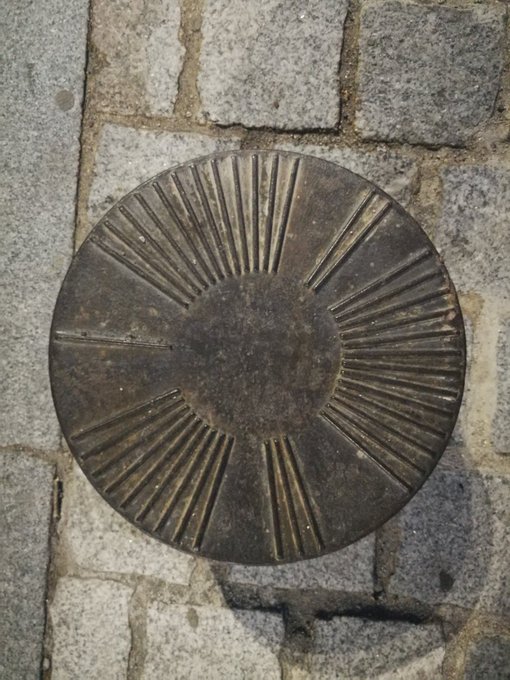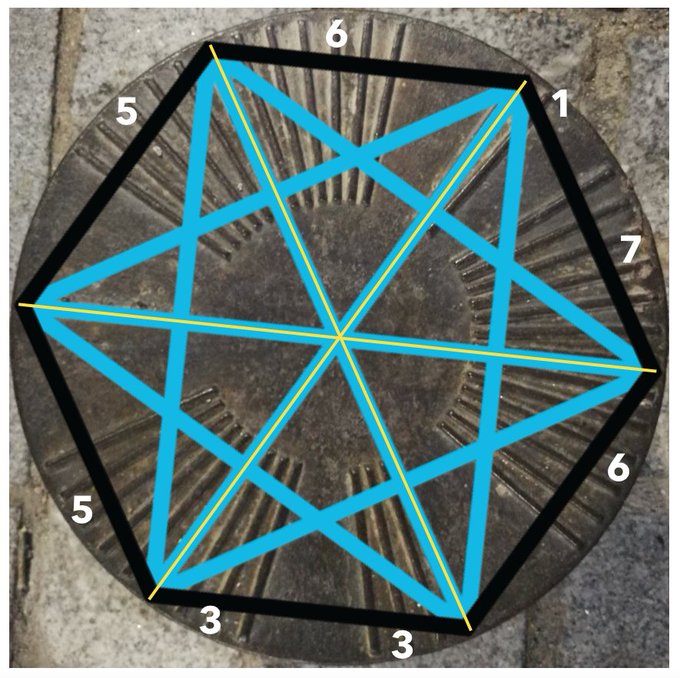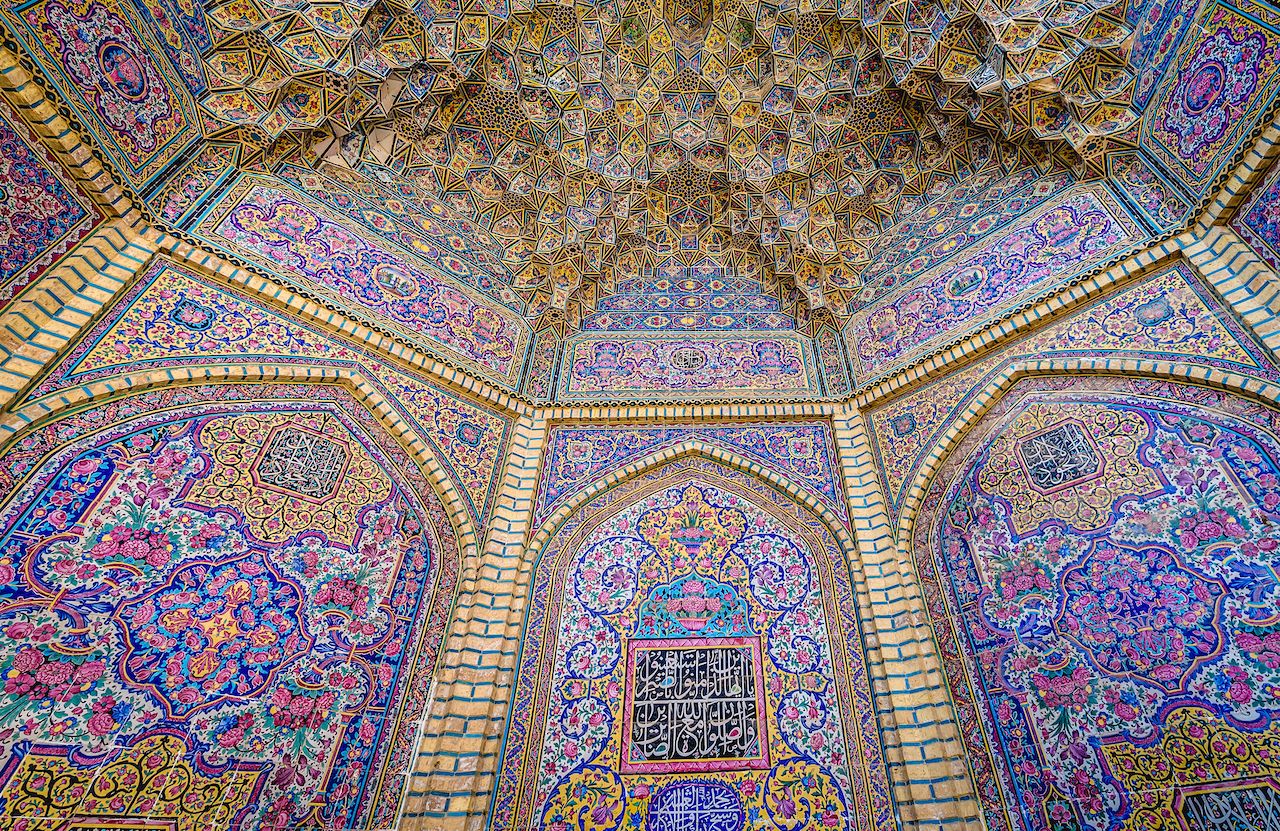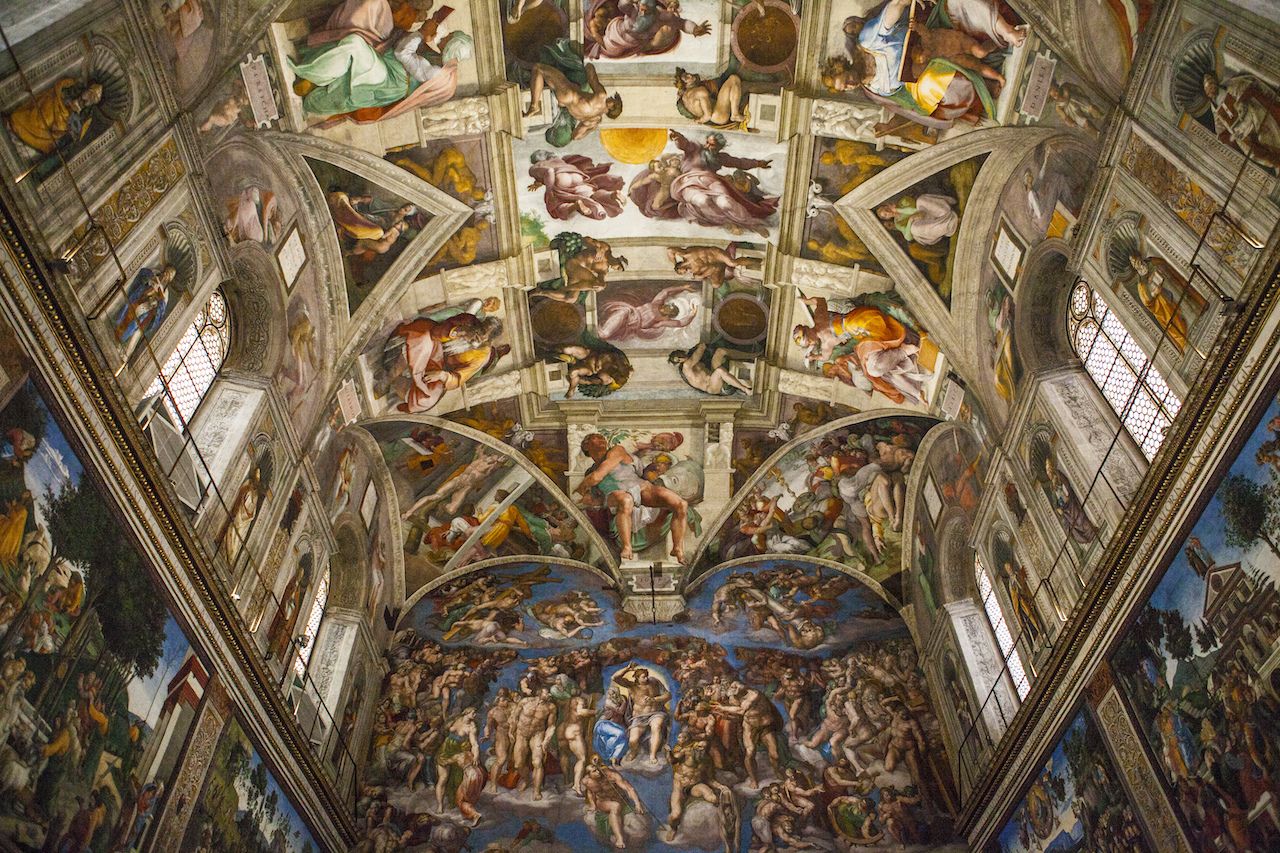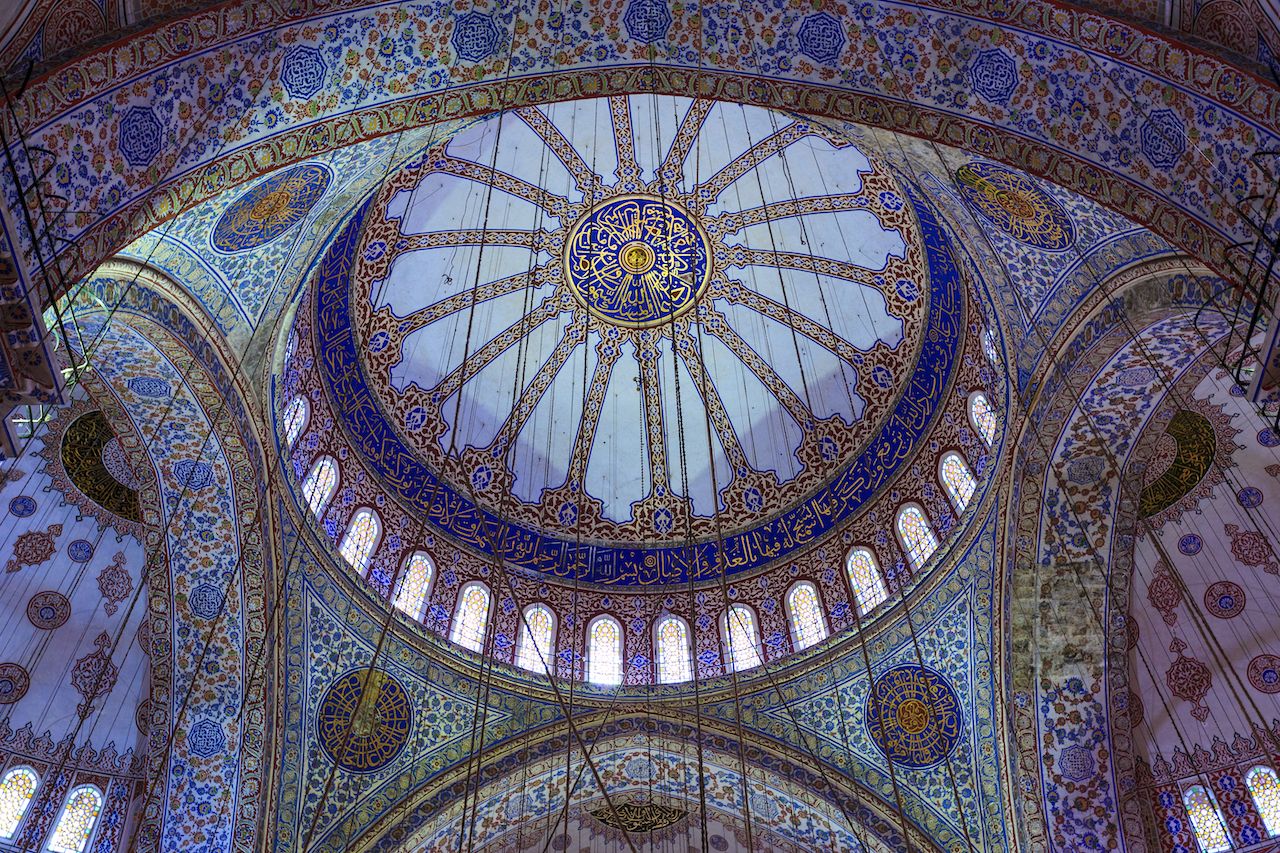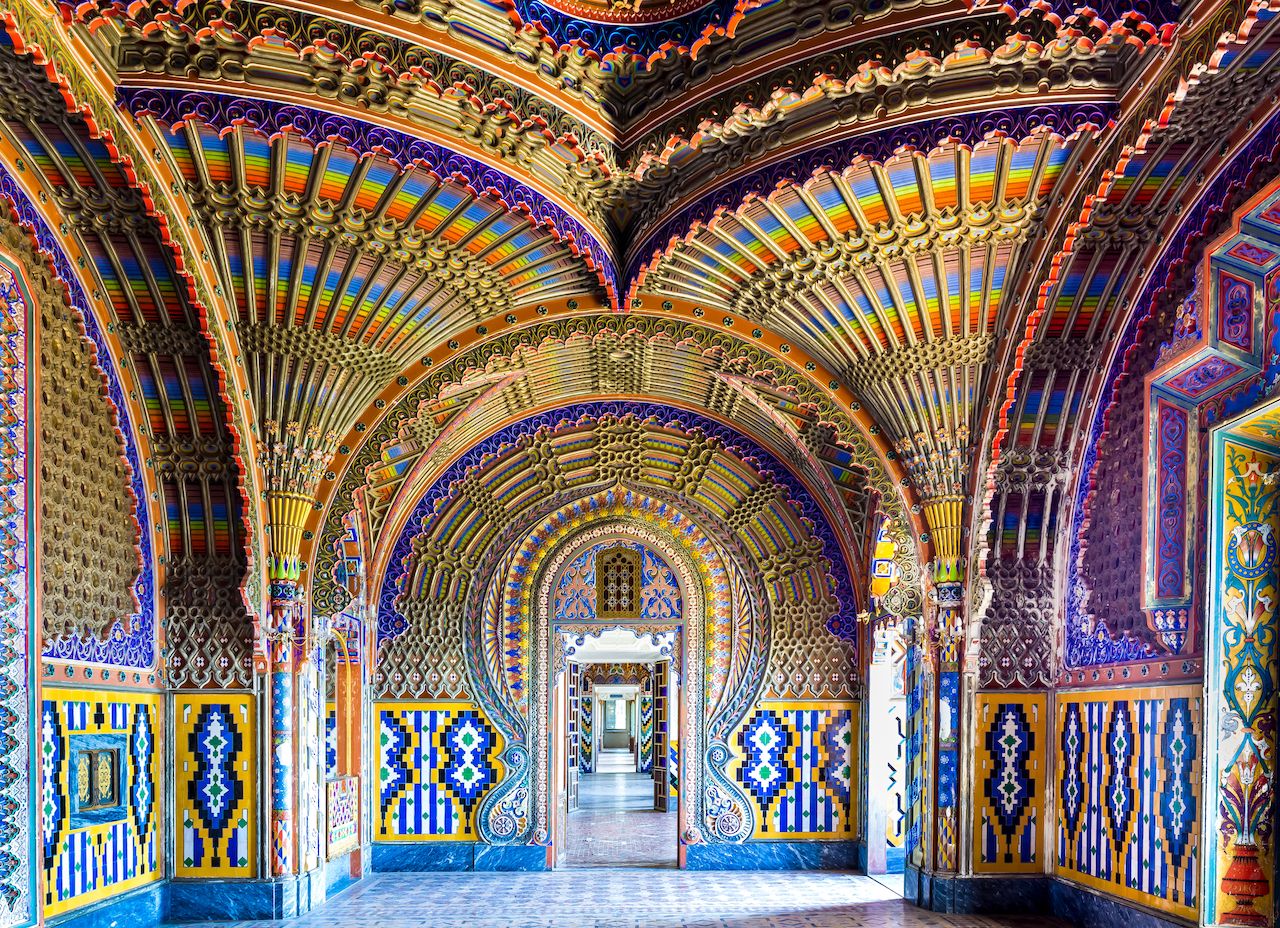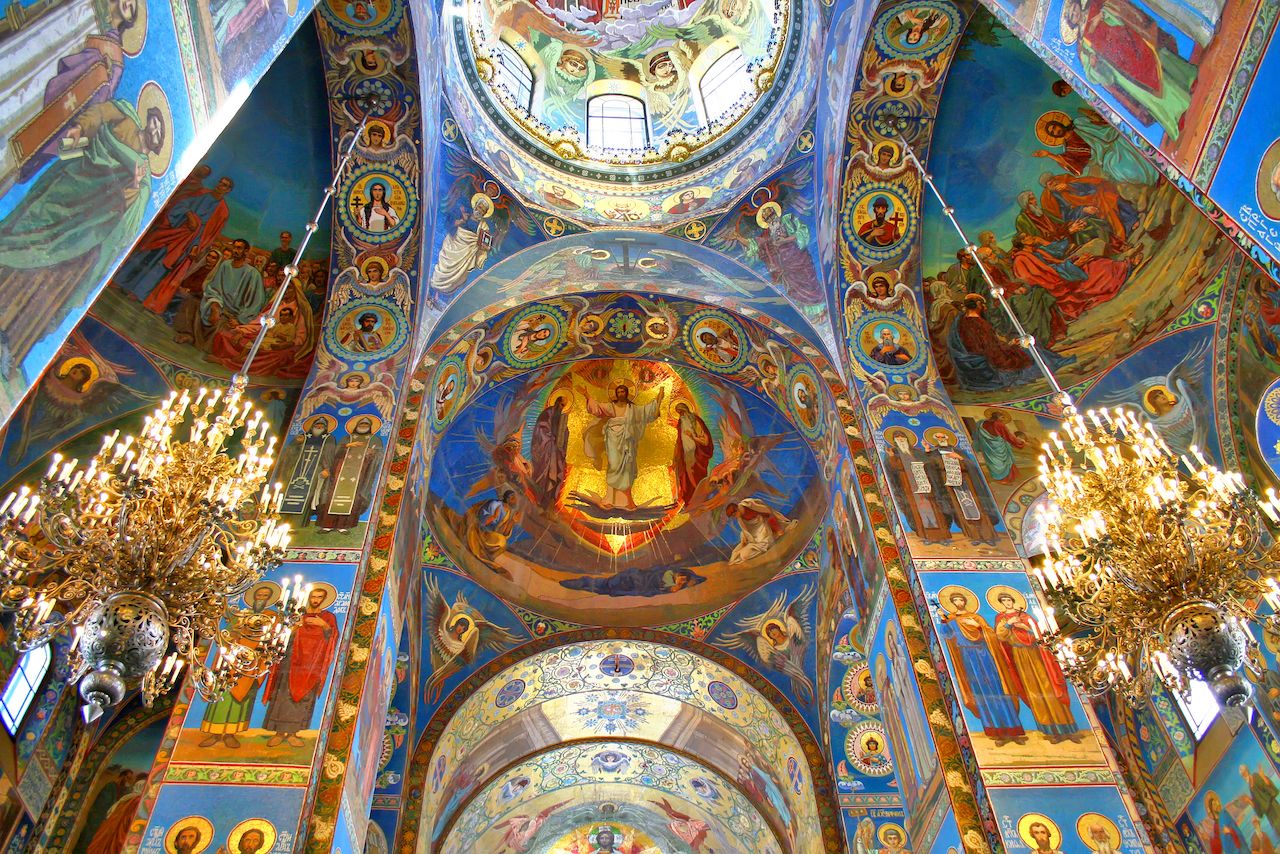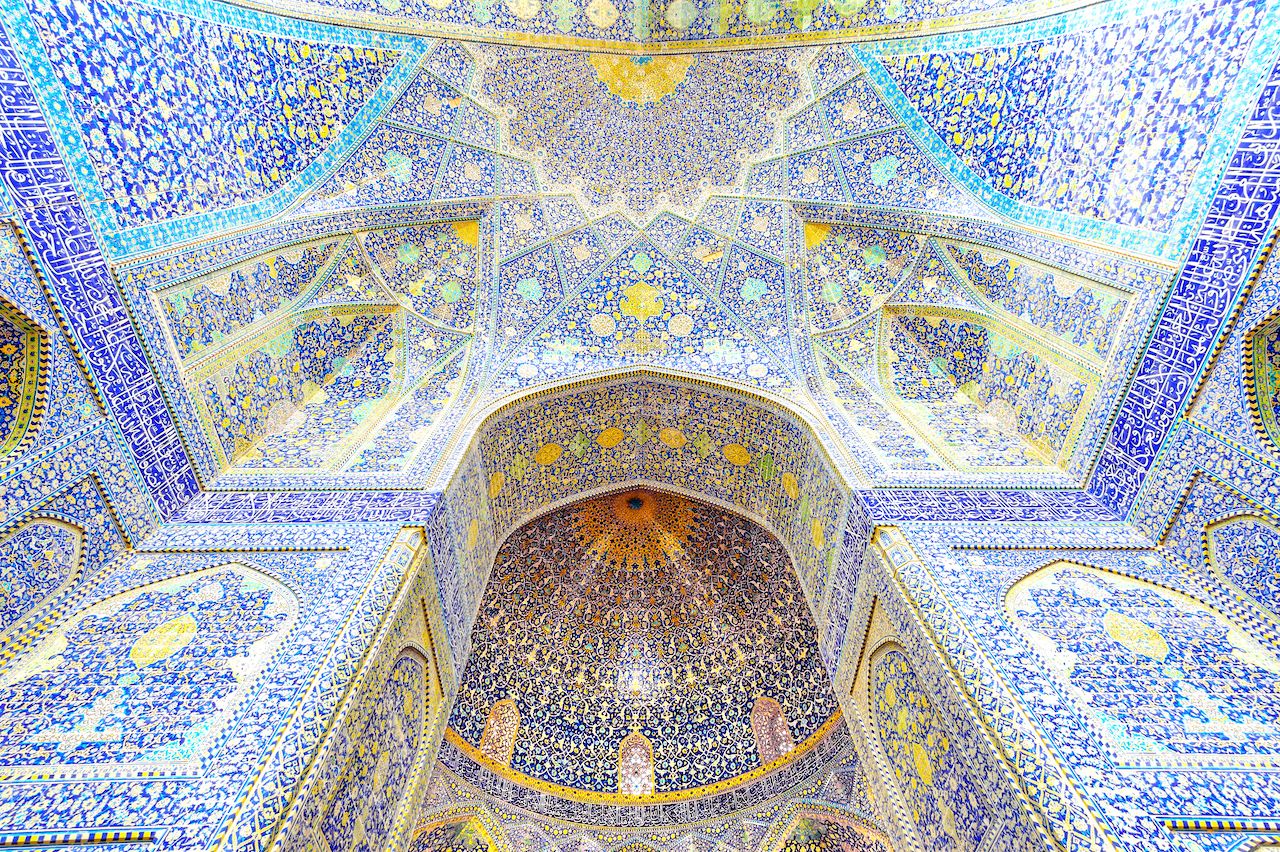USUALLY FOUND IN churches, mosques, and other houses of worship, stained-glass pieces dance with color and light to produce visual displays that inspire wonder and remind us of the majesty this mysterious world has to offer. Whether they inspire you to pray, or just pause to appreciate a thing of beauty, check out these stunning stained-glass masterpieces around the world and prepare to be wowed.
1. Sainte-Chapelle — Paris, France
Photo: SIAATH/Shutterstock
The towering purple-hued stained glass of the Sainte-Chapelle in Paris is one of the most iconic and breathtaking works of glass art in Europe, if not the world. With 1,113 scenes depicting history across the Old and New Testaments, this Gothic masterpiece was built in just seven years. The Sainte-Chapelle is open every day (save for New Year’s Day, Christmas, and May 1st) at 9:00 AM, and closing time varies by season. Entry tickets cost 10 euros (about $12).
2. Palau de la Música Catalana — Barcelona, Spain
Photo: Rodrigo Garrido/Shutterstock
Though the Sagrada Família has earned its reputation as one of the most awe-inspiring churches in the world to visit — in large part due to the rainbows of stained glass making the whole place glow from within — Barcelona’s lesser-known Palau de la Música Catalana has just as beautiful stained-glass creations. The grand glass skylight functions as the centerpiece and is meant to resemble a drop of water and honey, casting a warm glow throughout the multi-story venue. The Palau de la Música is a working concert hall, so attend an opera performance or go for a tour. Tours are available daily between the hours of 10:00 AM and 3:30 PM and start at just 15 euros (about $18) for a self-guided tour.
3. Santuário Dom Bosco — Brasília, Brazil
Photo: Diego Grandi/Shutterstock
Floor-to-ceiling stained-glass windows in shades of blue and purple line all sides of the sanctuary at Santuário Dom Bosco, and, as if the digs needed more bling, there’s also a massive Murano glass chandelier hanging in the middle of the room. It’s made of 7,400 pieces of Murano glass and was designed to symbolize Jesus as “the light of the world.” Named for Saint John Bosco, who dedicated his life to adolescents and young people, the active church hosts mass several times per day and is free to visit.
4. Nasir Al-Mulk Mosque — Shiraz, Iran
Photo: Alexander Mazurkevich/Shutterstock
Iran’s Nasir Al-Mulk Mosque is one of those places you’ll have to see to believe. Also referred to as the Pink Mosque and the Mosque of Colors, Nasir Al-Mulk Mosque provides an inspiring display as thousands of colors alight through the stained-glass patterns and colorful tiles that make up the interior. Built in the late 1800s, the mosque today gives visitors the chance to experience what it might be like to step inside a kaleidoscope. It’s open every day except Fridays (visit in the early morning for the full experience) and has an entrance fee of 150,000 Iranian rial (about $4).
5. Erawan Museum — Bangkok, Thailand
Photo: Copycat37/Shutterstock
When in Bangkok, don’t miss the Erawan Museum, topped with a three-headed elephant sculpture, and its three floors of antiques, ancient religious artifacts, and collections of art. At the feet of the elephant is a massive round stained glass window, rare in Thailand. You can even climb the stairs to walk around inside the elephant. The museum is open every day from 8:00 AM to 6:00 PM, and admission costs 300 baht (a little less than $8 USD).
6. Gran Hotel Ciudad de México — CDMX, Mexico
Photo: Vincent St. Thomas/Shutterstock
Guests of the Gran Hotel Ciudad de México will find themselves beneath one of the four largest works of Tiffany stained glass in the world. A masterpiece of Art Nouveau style, the hotel that the glass piece calls home dates all the way back to 1899. The Gran Hotel Ciudad de México is a working hotel, so either book a room or walk through the atrium and look up at the massive domed roof of glass and wrought iron.
7. Chapel of Thanksgiving — Dallas, Texas
Photo: James Kirkikis/Shutterstock
The Chapel of Thanksgiving is the spiritual epicenter of a complex called Thanks-Giving Square, which also features meditation gardens and the Hall of Thanksgiving, a forum and meeting space that tells the story of the American Thanksgiving tradition. Inside the chapel, which is open to all faiths, visitors will find a stunning spiral of colorful stained glass called the Glory Window, which rises 60 feet into the air. The colors transition from cool to warm as the glass ascends, mimicking the journey through life toward a golden conclusion. The chapel is open from 11:00 AM to 3:00 PM every day except Tuesdays (and on Mondays, it doesn’t open until 1:00 PM). Admission is free but leaving a donation is encouraged.
8. Metropolitan Cathedral of Saint Sebastian — Rio de Janeiro, Brazil
Photo: Christian Vinces/Shutterstock
Better known as the Metropolitan Cathedral of Rio de Janeiro or the Cathedral of St. Sebastian of Rio de Janeiro, the Metropolitan Cathedral of Saint Sebastian is dedicated to Saint Sebastian, the patron saint of Rio de Janeiro. Conical in shape, the massive cathedral is reminiscent of a Mayan pyramid, save for four 200-foot panels of stained glass stretching to the pinnacle. It is a working cathedral open to visitors every day from 7:00 AM to 5:00 PM and is free to enter.
9. Iglesia El Rosario — San Salvador, El Salvador
Photo: Kobby Dagan/Shutterstock
Don’t be fooled by the nondescript exterior of this place of worship — it hides one of the most strikingly beautiful churches in the Americas. A rainbow of light pours in through the arched concrete semicircle that forms the roof of Iglesia El Rosario in San Salvador. Built in 1971 by Rubén Martínez, the church abounds with art, including a prominent web of metal forming a sort of umbrella over the altar. People from all walks of life are welcome to stop in or enjoy a church service. 

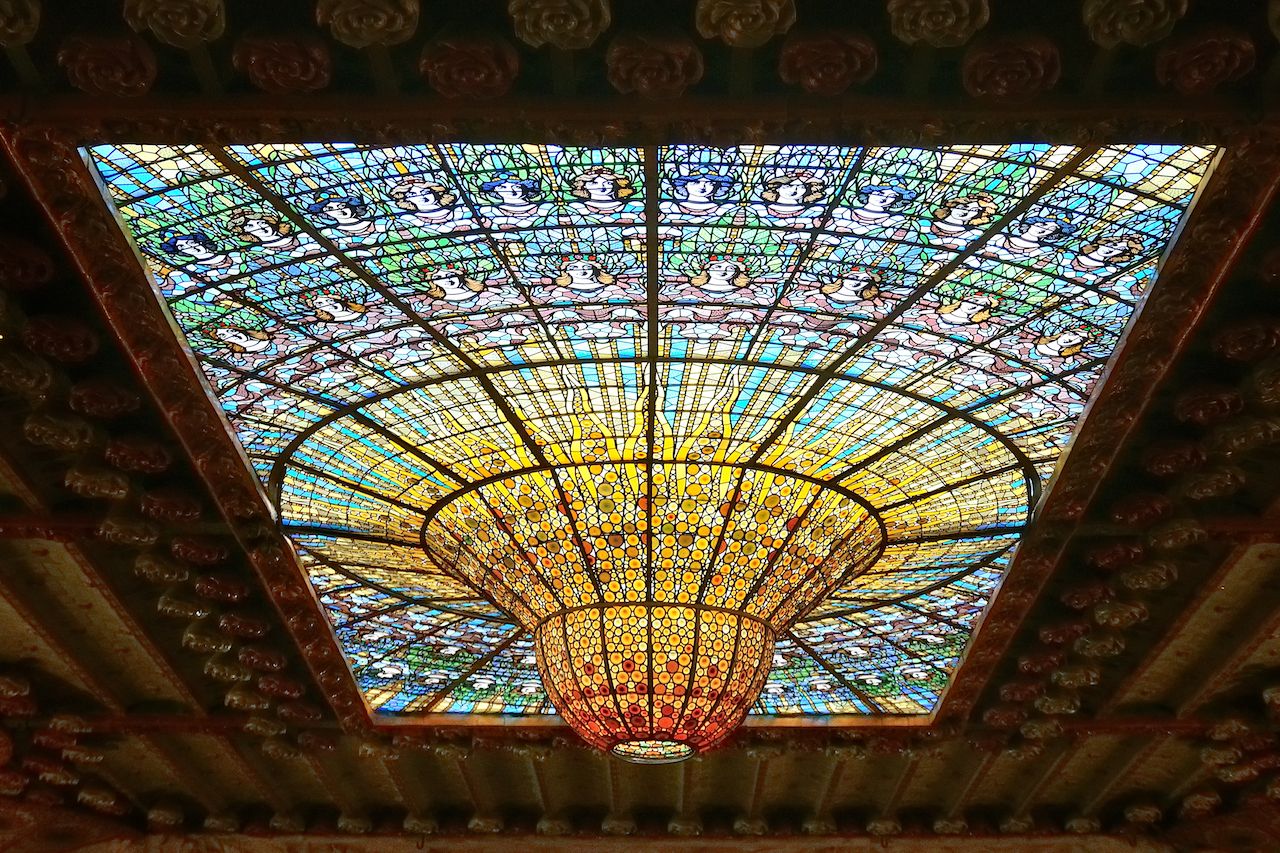
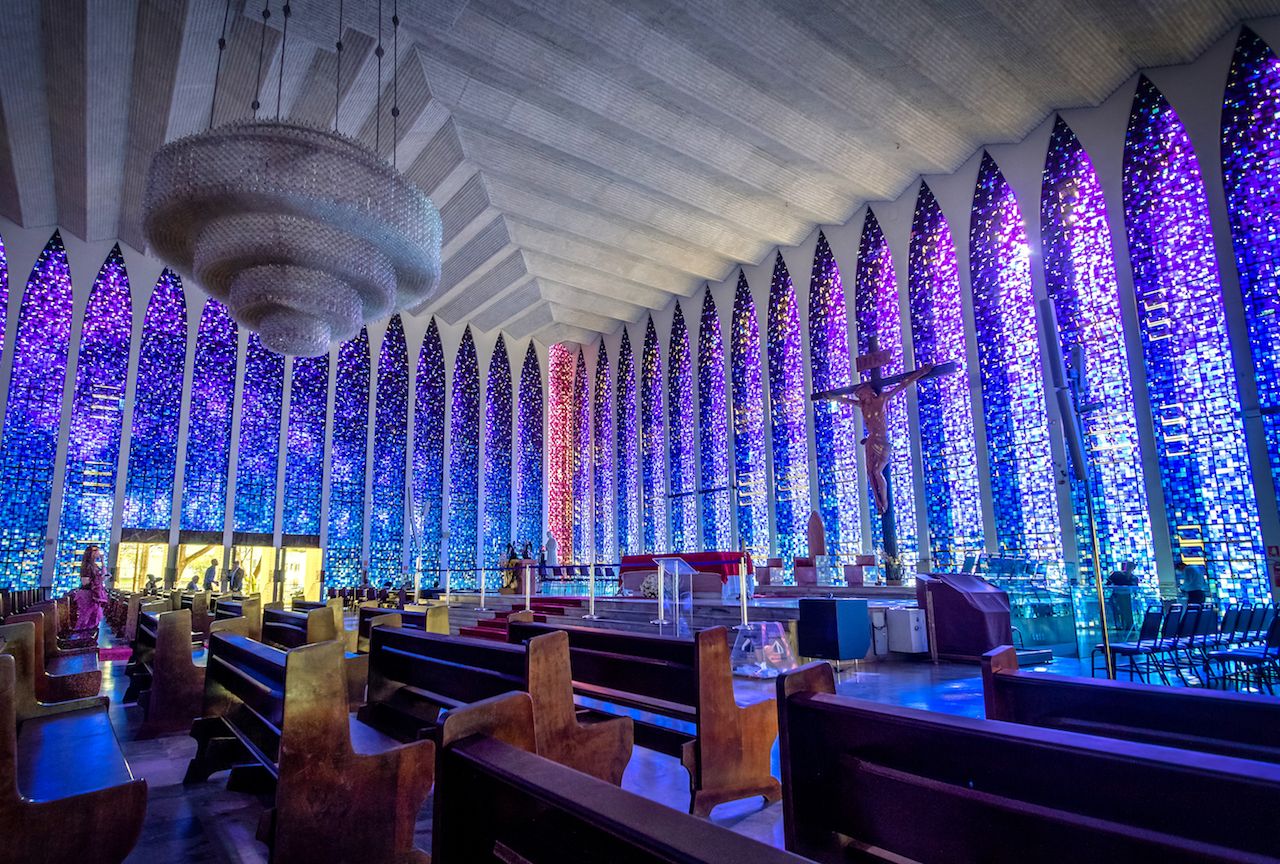
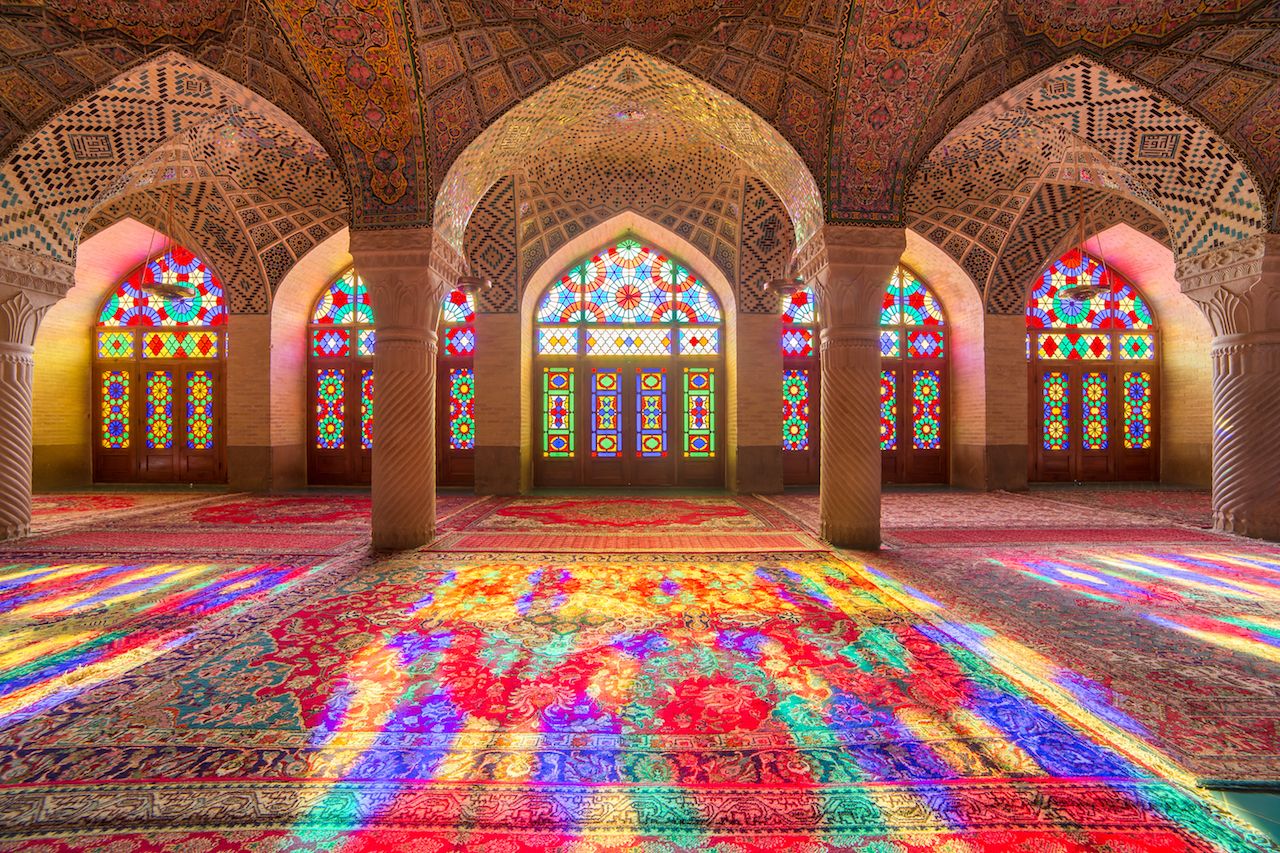
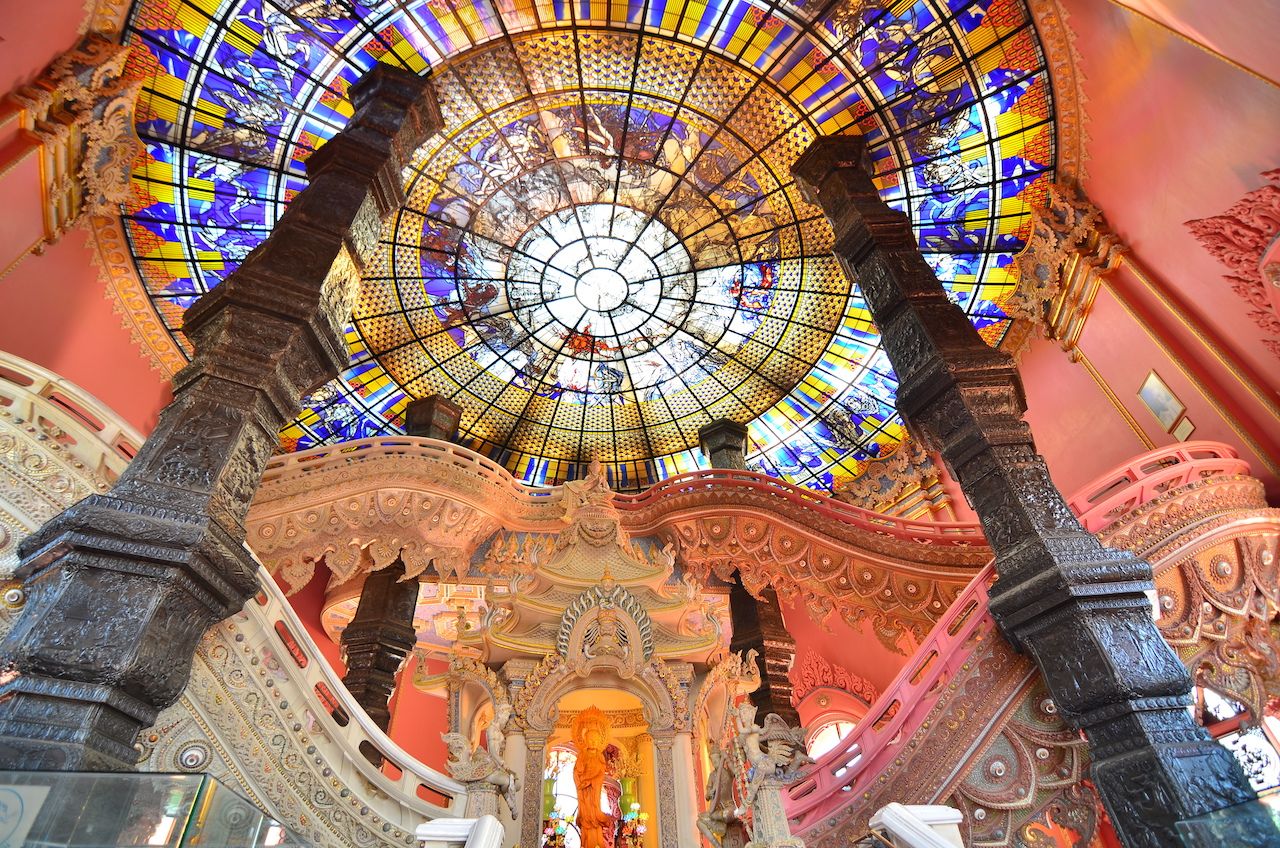
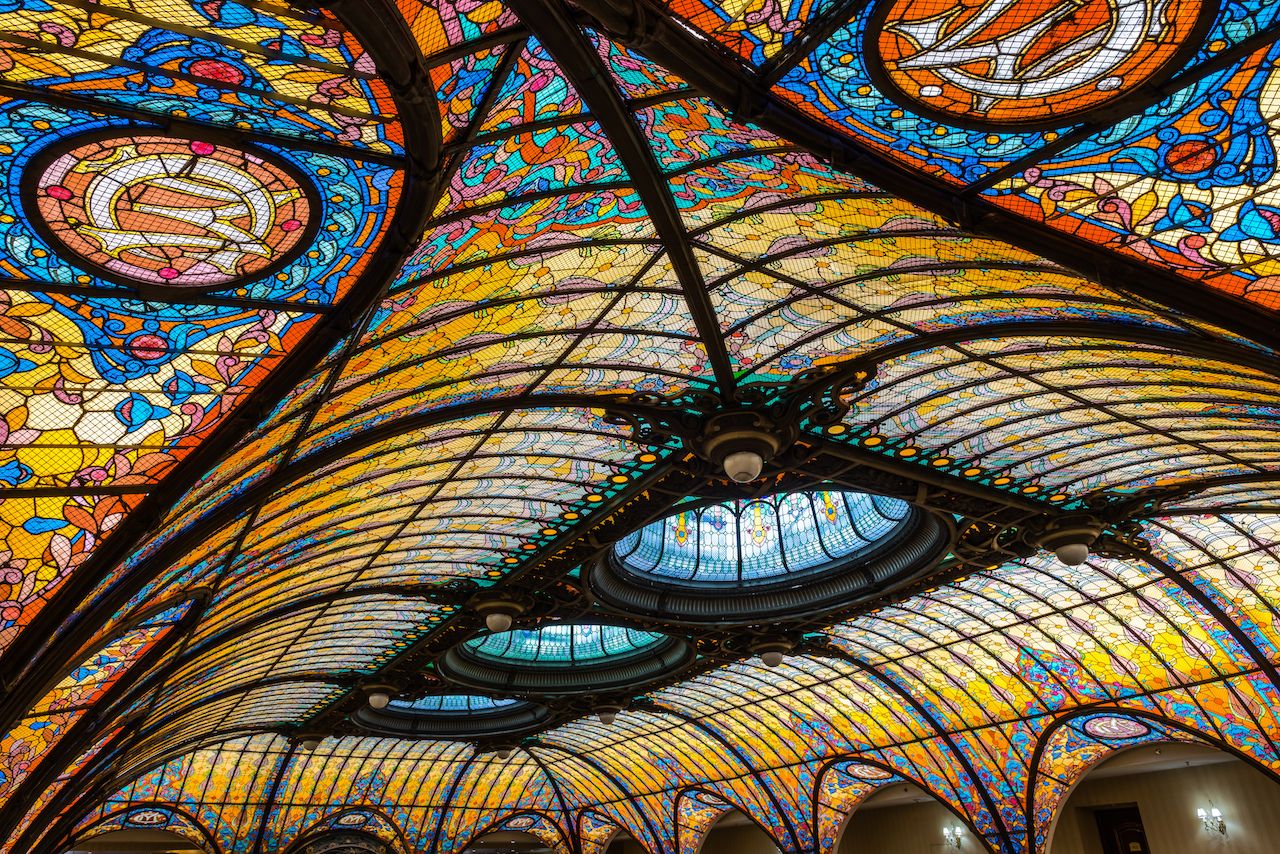
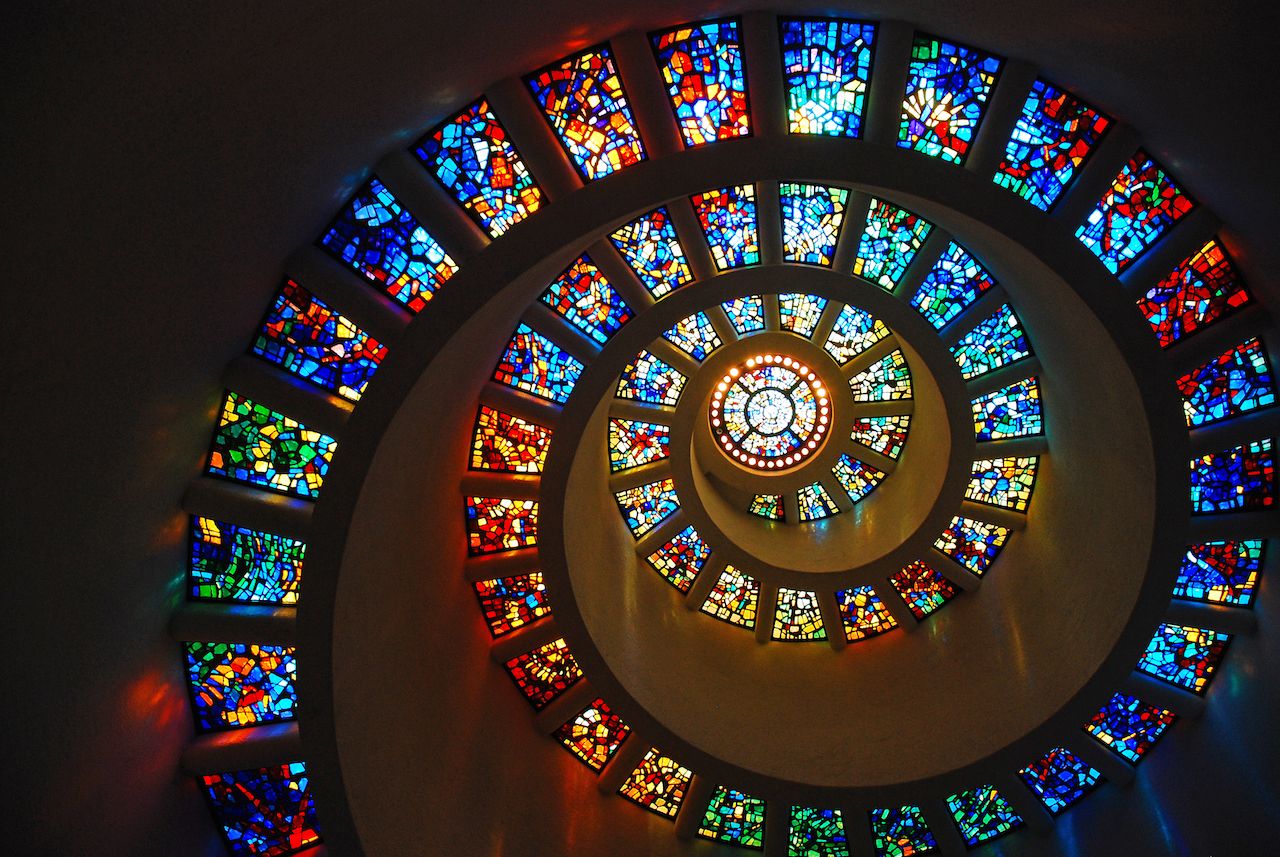

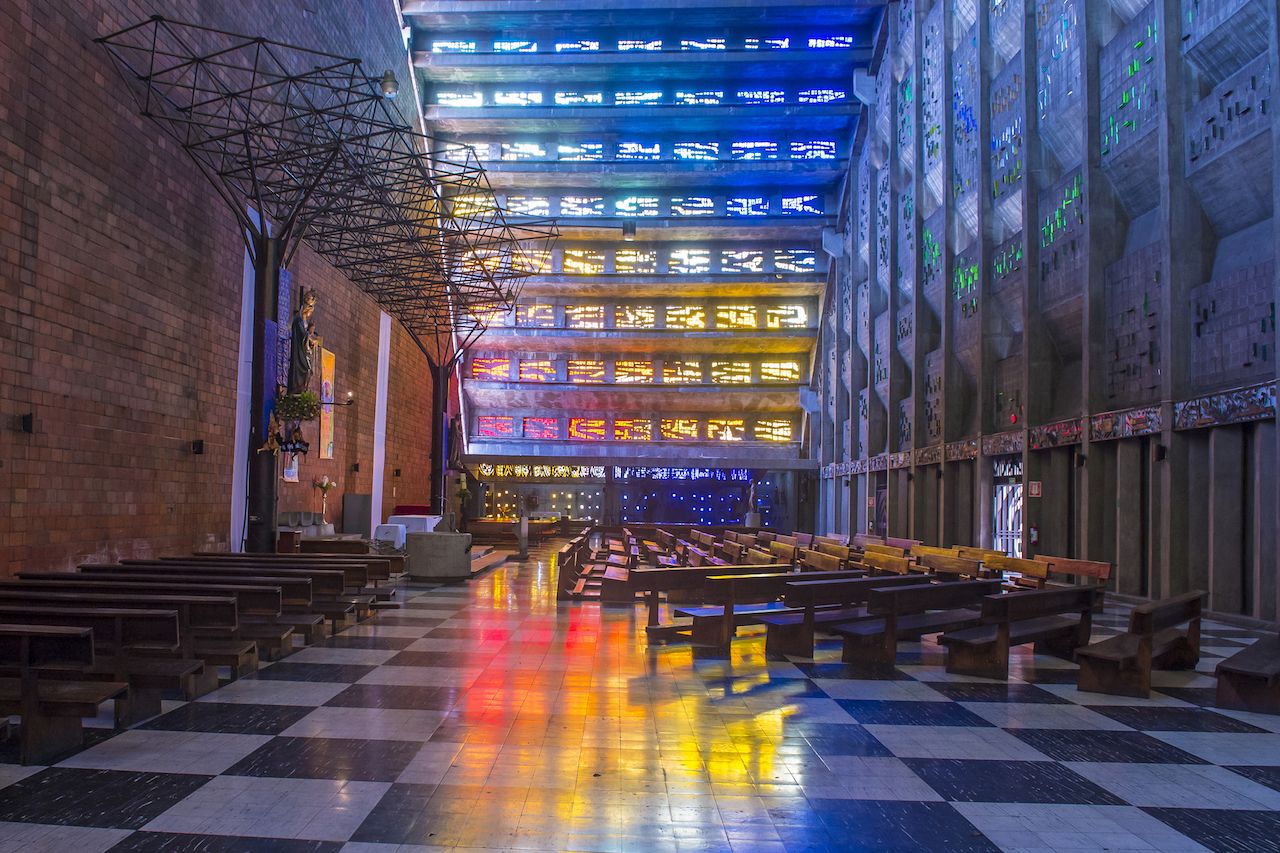
:quality(75)/curiosity-data.s3.amazonaws.com/images/content/landscape/standard/bc860f59-391b-4759-eba2-fcfe802f42b3.jpg)

